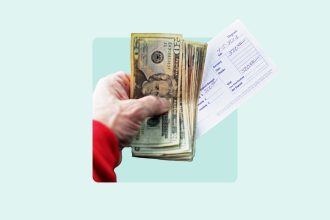Key takeaways
- Though they buy homes in greater numbers, single women lag behind men when it comes to building home equity and wealth.
- Women wait longer to purchase, pay more for homes when they buy — taking out larger, pricier mortgages — and get less when they sell.
- Both economic constraints (wage disparities) and psychological mindsets hold women back from homeownership.
- Resources are available to help women overcome these challenges, including federal and non-profit programs that provide homeownership education and down payment/closing cost assistance.
The biggest asset most Americans own is their home: It’s the bedrock of their wealth and financial worth. But unfortunately, that rock is less substantial for one sex than for another.
For single women, wealth accumulation achieved through home equity lags behind that of single men, according to a Yale School of Management study, “The Gender Gap in Housing Returns.” Women pay more to buy a home, and reap less when they sell it. They can afford a smaller chunk of the homes on the market and the homes they do purchase tend to be worth less, making their ownership stake less valuable, other studies show.
Various reasons exist for this state of affairs, including the continuing wage disparity between the sexes. But the result is women earn about 1.5 percent less in annualized returns from their homes than men — and that “overall, gender differences in housing explain up to 30 percent of the gender gap in wealth accumulation,” the Yale study says.
History of women and real estate
Women today have the same rights as men when it comes to acquiring and owning property. But it was not always so. While they could inherit real estate — and, by 1900, hold title to it in their own names — purchasing it was often difficult. In fact, well into the 20th century, American women typically couldn’t take out a mortgage without having a man co-sign the application. It was technically legal for banks to refuse loans and credit to unmarried women, or require a husband’s permission for a married female applicant.
Things began to change with the passage of the Fair Housing Act in 1968 and the Equal Credit Opportunity Act in 1974.
“The Fair Housing Act made it illegal for women to be discriminated against when buying a home and securing a mortgage,” says Miloney Thakrar, founder and principal at Mind the Gender Gap, Inc., a consulting firm focused on gender equity. “Enactment of the Equal Credit Opportunity Act in 1974 made it illegal for creditors — such as a lender or broker — to discriminate on the basis sex, including sexual orientation and gender identity or marital status. In other words, women were finally able to secure a mortgage independently without needing a male cosigner. “
These two pieces of federal legislation — along with women’s increasing earning power and presence in the workplace — substantially smoothed the female path to homeownership. In 1981, 74 percent of home buyers were married couples, while just 11 percent were single women and 10 percent were single men, according to the National Association of Realtors (NAR). Fast forward to 2023: 59 percent of homebuyers are married, while 19 percent are single women and 10 percent are single men.
In fact, single women have bought more homes than single men every year since at least 1981. The single best year to date for single women in the real estate market was 2006, when they accounted for 22 percent of home buyers.
While that number has dropped a bit, it still appears women are having less trouble applying for mortgages, says Jessica Lautz, the NAR’s deputy chief economist and vice president of research. “It could be possible they have a harder time during the homebuying process, but they are such a sizable part of the market that we’re not seeing apparent struggles,” she says.
Lautz points to data from the NAR’s 2023 “Profile of Homebuyers and Sellers” report, which found that 25 percent of single women said the mortgage application process was easier than expected — compared to just 22 percent of single men.
Despite all of the progress, achieving homeownership and substantial home equity is still challenging for many women. They also make smaller down payments and take out bigger mortgages, meaning they start out with less of an ownership stake than single men do.
When it comes to buying, the difficulty is often due to economic problems. According to Bankrate’s down payment survey, coming up with the cash can be challenging for women: When asked, “How long, if at all, do you anticipate it will take you to save up for a down payment on a home?,” 23 percent of women who would like to own a home someday responded they’d never be able to save enough — compared to just 18 percent of men who felt that way. Additionally, over half (56 percent) of aspiring female homeowners felt the cost of living was too high and their income wasn’t high enough to afford a down payment and closing costs. Only 46 percent of aspiring male homeowners cited a high cost of living as holding them back.
And in Bankrate’s newest home affordability survey, when asked for the reasons they didn’t currently own a home, 47 percent of women specifically replied they couldn’t afford a down payment and closing costs, compared to 36 percent of men.
Women’s roadblocks to home ownership and home equity
“There is a significant difference between the household income of single men and women who purchase homes,” Lautz observes: Among first-time homebuyers, $83,800 (for him) compared to $69,600 (for her), according to NAR data.
Single women make more financial sacrifices, and purchase five years later in life than single men.
— Jessica LautzDeputy Chief Economist & Vice President of Research, National Association of REALTORS
“Women who are trying to get on the first rung of the homeownership ladder are starting from behind,” agrees Orphe Divounguy, senior economist for Zillow, the real estate platform. “This is partly because single mothers experience a significant pay gap. In addition to the disparities in the labor market, research shows that women tend to have worse credit market experiences than men.”
A 2022 Zillow study found that women have access to 18 percent less of the real estate market than men because of the wage gap: In other words, they could buy nearly one-fifth more of the available homes (and presumably, higher-priced homes) if they made as much money as their male counterparts. This in turn, contributes to a “home value gap”: the fact that the homes owned by women tend to be worth less overall than those owned by male-headed households — specifically, worth 92.3 percent of male-owned homes, according to Zillow data.
Negotiation skills lag behind men
In addition to all of the challenges already mentioned, the Yale study indicates women pay more for the homes they do buy — and not because they’re purchasing pricier places. Rather, they “negotiate worse discounts relative to the list price” of a home, the Yale study says. To put it bluntly, they don’t bargain as well as male home buyers.
“Unfortunately women are known not to be as good at negotiation as men; chalk it up to practice or different levels of comfort with one-on-one negotiations,” says Laura Adams, senior real estate analyst for Aceable, an education platform offering real estate licensing courses. “That may leave them buying a home at a higher price than a male counterpart would.”
And with mortgages, every little bit negotiated off the price counts. Even paying $5,000 or $10,000 more for the purchase price of a home can really add up over time and make it harder to develop as much equity, says Adams.
Being negotiation-challenged handicaps women on the selling side, too: Despite buying at higher prices, female homeowners tend to list their properties for lower prices and recoup lower proceeds from the sale, according to the Yale study.
Women wait longer to buy
Yet another factor impacting the amount of home equity wealth women accumulate is waiting longer to purchase a home. The median age of single female first-time homebuyers is 38 years old, vs. 33 for their male counterparts, according to NAR data. That could largely be due to financial reasons — it taking women longer to amass the money. (In Bankrate’s down payment survey, only 8 percent of aspiring female homeowners anticipated it would take one to two years to save for a down payment — compared to 12 percent of aspiring male homeowners.) But it could also reflect a less secure mindset.
In many cases, “women [still] feel like they need to have a partner to buy a house with,” says Austin, Texas-based real estate agent Stephanie Douglass, who with business partner Kristina Modares co-founded the brokerage Open House Austin specifically to educate and encourage single female house-hunters. “Maybe they feel like they’re not handy or it’s something they feel is too risky to do on their own, but in that time they’re waiting, they’re losing out on so much equity.”
The good news is: This sentiment is less present in up-and-coming generations. Close to half (42 percent) of millennials (ages 28-43) have purchased a home alone, compared to 34 percent of Gen Xers (ages 44-59) and 22 percent of baby boomers (ages 60-78), according to Bankrate’s new Homebuying Trends Survey, released May 16. While they subscribe to this traditional tenet of the American Dream, this group — which now makes up the majority of homebuyers, according to the NAR — is willing to consider non-traditional ways to get it.
Bankrate insights
Getting a home equity loan: single vs. married
The application and review process for obtaining a home equity loan today is no different for singles than it is for married couples, nor is it different for different genders. In general, lenders consider the same types of criteria — credit score, debt-to-income ratio (DTI), income and the amount of equity in the home.
Additionally, by law a lender may not deny a loan applicant based on marital status, according to the Consumer Financial Protection Bureau (CFPB), nor can they deny a married individual credit in their own name. Lenders are also prohibited from evaluating applicants on the basis of their sex, including sexual orientation and gender identity, and a sex-related condition (such as pregnancy).
“The process doesn’t differ significantly between married couples and single people,” says Thakrar. “However, when taking into consideration all of the qualifications…the process may take longer for married couples, because it may take longer to collect and analyze all the necessary information to make a determination.”
While the process of getting a home equity loan or a home equity line of credit (HELOC) does not differ, single women may have less available home equity to tap, compared to single men or married couples. As the Zillow report indicates, homes owned by women are generally worth less overall. And of course, due to disparities in pay, single female applicants may have less income, fewer assets and greater debts, which could lessen their chances of approval or of getting the best loan terms.
History of mortgage discrimination
Housing and mortgage discrimination is an issue that has impacted the homebuying landscape in America for more than a century. In particular, the practice of redlining, which dates back to the 1930s, involved lenders outlining in red areas on maps where Blacks (and other non-white groups) lived and categorizing them as highly risky investments. This systematic segregation included denial of financing and other housing-related services and opportunities based on race.
Women historically have been impacted by mortgage discrimination in other ways. A higher percentage of female-only borrowers are denied mortgages than their male-only counterparts; they have a higher denial rate than couples as well. They also have been unduly victimized by “pinklining,” a term introduced in a 2016 survey funded by several nonprofit organizations. It refers to the practice of systemically targeting and subjecting women to exploitative and predatory lending techniques and products. Women of color in particular have been “steered toward subprime loans even when they could have qualified for prime loans,” the “Pinklining” report charges. The higher interest rates, fees and penalties of these loans make it more likely for female homeowners to fall into ever-tightening debt traps and foreclosure, it further notes.
And, not surprisingly, homeownership progress hasn’t been equal for all women. A 2021 report from the Urban Institute shows that while 70 percent of white female-headed households were homeowners in 2019, just 59 percent of Asian, 45 percent of Black and 40 percent of Hispanic female-headed households owned their home.
Yet, despite all this — and their weaker credit/income qualifications — women default less on their mortgages than their male counterparts, an Urban Institute study found. This fact holds true across all ethnic groups.
Efforts to end mortgage discrimination
The Fair Housing Act, a subsection of the Civil Rights Act of 1968, outlawed the practice of redlining and discrimination in the real estate industry. Its protections were extended by the Equal Credit Opportunity Act of 1974, which prohibited discrimination specifically against credit or loan applicants on the basis of sex or marital status, and in a 1976 amendment, on the basis of race, color or religion.
The subsequent Community Reinvestment Act (CRA) has sought to address mortgage discrimination in a proactive way. Adopted in 1977, the CRA “requires the Federal Reserve and other federal banking regulators to encourage financial institutions to help meet the credit needs of the communities in which they do business, including low- and moderate income neighborhoods,” according to the Federal Reserve.
The U.S. Department of Housing and Urban Development (HUD) enforces these acts. It also operates the Office of Fair Housing and Equal Opportunity, whose mission is ensuring that there are equal housing opportunities for everyone, regardless of race, color, religion, sex, disability, national origin or family status.
Though it seems there may still be more work to be done addressing discrimination based on gender and race as well. “Discrimination based on sex and familial status are among the most common fair housing complaints filed with federal agencies, along with discrimination based on disability and race,” notes a National League of Cities report.
Single women are …placing a priority on homeownership, despite lower household incomes.
— Jessica LautzDeputy Chief Economist & Vice President of Research, National Association of REALTORS
Resources for women seeking home equity loans
If you’re a single woman seeking a mortgage or home equity loan, there are resources available that provide education about these financial products.
These resources include:
- Federal Trade Commission consumer advice site—The FTC provides a series of descriptive articles regarding the risks of a home equity loan and a home equity line of credit (HELOC), explaining the basics of how they work, and how to shop for them.
- Consumer Financial Protection Bureau federal mortgage rules guide—This educational guide outlines exactly what you can expect under government regulations (and protections) when shopping for a mortgage. It covers what type of information lenders legally can and will request from you, financial qualifications for a mortgage, and ways to spot lending discrimination.
- U.S. Department of Housing and Urban Development housing counselors—HUD offers housing counseling and education services for home buyers. It has counseling service locations throughout the country and counselors can also be reached by phone.
In practical terms, there are resources that can help women become homeowners, including help with the significant hurdle of a down payment and of closing costs.
These resources include:
- Home Ready—Fannie Mae offers this mortgage product. Requiring as little as 3 percent down, it is designed to help low-income borrowers and is open to both first-time and repeat homebuyers. Home Ready can be used to purchase or refinance a home.
- Home Possible—Sponsored by Freddie Mac, Home Possible is another program that requires only a minimal down payment of 3 percent. In addition, this program allows mortgages to include co-borrowers who do not live in the same home, which can be helpful for low-income women who need assistance from relatives to secure a mortgage.
- Closing cost assistance programs—The National Council of State Housing agencies maintains a directory of closing cost assistance programs around the country. Some programs cover up to 100 percent of closing costs.
- National Homebuyers Fund—NHF, a non-profit corporation, offers down payment assistance programs. Over the past two decades it has awarded more than $398 million in funds.
Bottom line on the housing gender gap
The housing gender gap is not a problem that will be solved overnight, and many of its underlying causes — pay inequity, financing difficulties — are beyond any one individual’s control. But there are ways women can address their home-buying behavior.
First of all, understand the local real estate scene. “It’s important to know whether it’s a buyers or sellers market and whether there are a lot of homes on the market when you are negotiating,” Douglass says. Being armed with that information is crucial to your bargaining position.
When it comes to negotiating, “Know what cards you can lay on the table and be willing to walk away,” Douglass adds. “There’s often a very emotional tie with women thinking ‘I love this house,’ and ‘This is where I want to be.’ Disconnecting the emotional tie” is important: You also have to consider the purchase rationally, as an investment and wealth-building asset.
Doing so can help women make sounder homebuying — and home-equity building — decisions.
Home equity FAQs
-
Home equity is the portion of your home that you own outright. Basically, it is the difference between what your home is worth and how much you still owe on your mortgage — current home value minus outstanding loan balance(s). The amount of home equity you have is the basis for determining how much you can borrow via a home equity loan or home equity line of credit (HELOC).
-
Your home equity can be borrowed against to pay for many of life’s significant expenses. It can be used to settle or consolidate outstanding debts or loans, pay your kids’ educational costs, or finance home repairs or renovations. Tapping it for home-related expenditures is especially popular, as the loan interest can then be tax-deductible, up to a certain amount.
-
In general, lenders look for a good credit score (above 700 to get the best rates), a low debt-to-income ratio, a minimum percentage of equity in your home (usually at least 20 percent) and sufficient income for repayments. Not that different from mortgage criteria, actually.
Read the full article here
















